The Encyclopedia of Japanese Horror Films
National Cinema Series
Series Editor: Cynthia J. Miller
The Encyclopedia of Japanese Horror Films , edited by Salvador Murguia, 2016
The Encyclopedia of Japanese Horror Films
Edited by Salvador Murguia
Rowman & Littlefield
Lanham Boulder New York London
Published by Rowman & Littlefield
A wholly owned subsidiary of The Rowman & Littlefield Publishing Group, Inc.
4501 Forbes Boulevard, Suite 200, Lanham, Maryland 20706
www.rowman.com
Unit A, Whitacre Mews, 26-34 Stannary Street, London SE11 4AB
Copyright 2016 by Rowman & Littlefield
All rights reserved . No part of this book may be reproduced in any form or by any electronic or mechanical means, including information storage and retrieval systems, without written permission from the publisher, except by a reviewer who may quote passages in a review.
British Library Cataloguing in Publication Information Available
Library of Congress Cataloging-in-Publication Data
Names: Murguia, Salvador, 1977 editor.
Title: The encyclopedia of Japanese horror films / edited by Salvador Murguia.
Description: Lanham : Rowman & Littlefield, [2016] | Includes bibliographical references and index.
Identifiers: LCCN 2016010203 (print) | LCCN 2016019009 (ebook) | ISBN 9781442261662 (hardback : alk. paper) | ISBN 9781442261679 (electronic)
Subjects: LCSH: Horror filmsJapanEncyclopedias.
Classification: LCC PN1995.9.H6 E53 2016 (print) | LCC PN1995.9.H6 (ebook) | DDC 791.43/6164dc23
LC record available at https://lccn.loc.gov/2016010203
 The paper used in this publication meets the minimum requirements of American National Standard for Information SciencesPermanence of Paper for Printed Library Materials, ANSI/NISO Z39.48-1992.
The paper used in this publication meets the minimum requirements of American National Standard for Information SciencesPermanence of Paper for Printed Library Materials, ANSI/NISO Z39.48-1992.
Printed in the United States of America
Acknowledgments
A project like this is not an individual endeavor, but rather a group effort. I would like to acknowledge, therefore, the professionalism and hard work of Rowman & Littlefields senior editor of arts and literature, Stephen Ryan, and his staff. Additionally, National Cinema Series editor Dr. Cynthia Miller of Emerson College has been, and continues to be, an invaluable resource for wisdom and expertise in developing both the potential for meaningful writing ventures as well as individual career options for those that propose to write them.
Within my own academic institution of Akita International University I would also like to acknowledge the director of Liberal Arts Studies, Dr. Marcin Schroeder; vice president of Academic Affairs, Dr. Peter McCagg; and executive registrar, Mrs. Yukiko Suda for their understanding, cooperation, and support for my research agendas.
Within my close circle of family and friends, I would also like to acknowledge Hide Murguia; Kohaku Francisco Murguia; Kiseki Concepcion Murguia; Polito Jin Murguia; Yoko Naganishi; Paul Jimenez; Jan Jimenez; and my mother, Olivia Jimenez, for their help with everything from translation assistance and personal advice to time to think, reflect, and writearigatou, thank you, and gracias!
Finally, I am indebted to those individuals who contributed to this volume, whose combined output makes this work rich with diversity and perspective. They, along with the producers, directors, actors, and fans of Japanese horror films, are the most valuable part of The Encyclopedia of Japanese Horror Films .
Introduction
Japans film industry is not only one of the oldest, but perhaps one of the more prominent in the world of motion picture production. Among its many genres, horror films have had a real impact on global popular culture. From the eerie storylines incorporating a fascination with violence and death like Suicide Circle and Ichi the Killer to the science fiction terrors of Godzilla and Tetsuo , horror plays a major role among Japanese film genres. While some of these films are rather poor productions, others, such as the Ringu movies, have been major hits in Japan and have influenced other horror productions in both Asia and the United States.
Accessible for general audiences and academics alike, this volume is one of the more comprehensive reference texts, covering virtually every major horror film production made in Japan from the past century to date. Additionally, this text also includes entries for notable writers, directors, producers, actors, and film festivals, as well as several cultural and literary influences that have helped to engender J-horror material.
To be sure, there are a number of texts on the market that serve as important tools for both obtaining a general understanding of the J-horror genre, as well as conducting advanced scholarly research on this topic. For example, it is important to acknowledge Colette Balmains (2008) Introduction to Japanese Horror Film , as it is an invaluable guide to establishing how the J-horror genre fits into the rest of Japanese cinema. Indeed, Balmains work has been an incredibly useful reference since the inception of the project, especially with regard to arranging the larger framework for how this volume would come to be. Additionally, Jay McRoys (2005) Japanese Horror Cinema and Jim Harpers (2009) Flowers from Hell: The Modern Japanese Horror Film , are both seminal works in the field of J-horror studies and have been instrumental in guiding the interpretations and analyses of the vast majority of the authors whose works appear in this text. Incidentally, this volume features several contributions from both McRoy and Harper. Moreover, Valerie Wees (2013) timely exploration of the cross-cultural adaptations and revisions of J-horror productions situates this entire field study within a transnational contexta truly important analysis for understanding the horror niche within popular culture in an era of globalization.
Notwithstanding these valuable works, this volume has several unique features that contribute to the larger body of literature on Japanese horror films. In addition to beingat the time of the writingthe only encyclopedia on the English-speaking market that takes up the specific content of the J-horror genre, there are also certain features about the way this text is written that are exclusive to this volume. First, this text adopts a rather basic definition of horror as merely content intended to disturb, repulse, unnerve, or unsettle an audience. For example, although emphasizing horror as a general theme, this encyclopedia also includes other genres that fit this definition, inclusive of Japanese comedy horror, science fiction horror, hyper-violence, Japanese cyberpunk horror, ero guru (erotic grotesque), tokusatsu horror (live-action special effects), and anime horror. In this way, the scope of this work stretches beyond the conventional parameters of the horror film genre, offering readers a broad, and hopefully novel, perspective on the intersection between popular culture and the commercial production of horror.
In addition to this broad definition and the amount of flexibility to incorporate content outside of the typical J-horror genre that it allows for, perhaps the most distinctive contribution of this text is the corpus of essays written by such an international assemblage of authors. Spanning the globe, this international and multicultural team engenders a variety of different interpretations, explanations, and points of viewsall of which should offer the reader some new insight into the horror genre in general and Japanese horror cinema in particular. To this end, this compilation of essays provides a window, albeit certainly limited, through which readers may view how Japanese horror films are received in different parts of the worlda feature that may prove as interesting as it is significant to understanding the transnational context of film today. For example, while some authors have incorporated notes on political and social constraints that have limited the pervasiveness of the films globally, others have picked up on controversial tropes associated with race, class, sex, and gender that steer some of these films away from traditional horror to a subtext of the socially horrific. Of course, as an encyclopedic endeavor, the contributors have made every attempt to produce objective output, yet in important places and, more importantly , important ways their critical thinking and interpretations are a valuable addition to this volume.
Next page
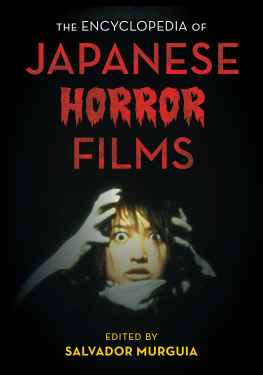
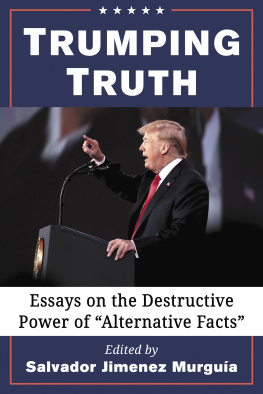
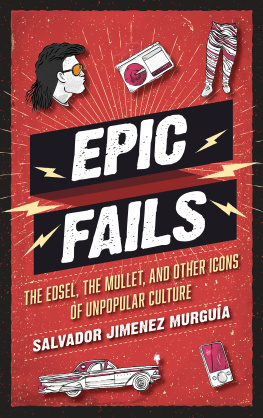

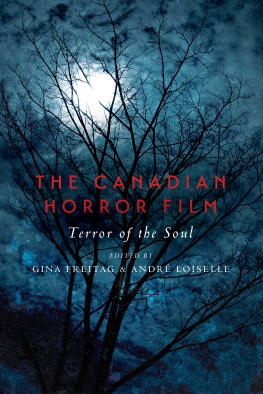


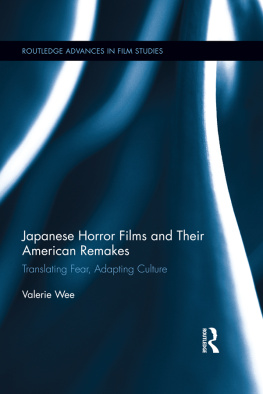
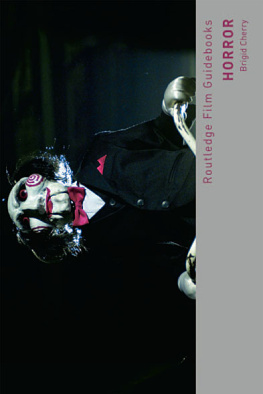

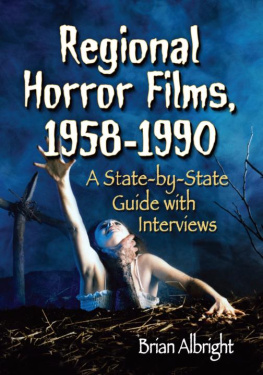
 The paper used in this publication meets the minimum requirements of American National Standard for Information SciencesPermanence of Paper for Printed Library Materials, ANSI/NISO Z39.48-1992.
The paper used in this publication meets the minimum requirements of American National Standard for Information SciencesPermanence of Paper for Printed Library Materials, ANSI/NISO Z39.48-1992.